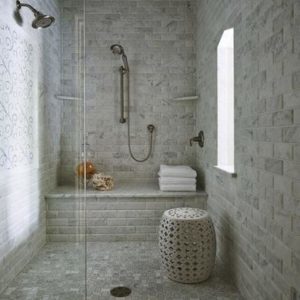The home plumbing system requires constant care and regular maintenance to enhance its functionality and ensure its longevity. There are very many sensitive parts or components in the home plumbing system. These are what we refer to as critical plumbing areas. These critical plumbing areas require special care and maintenance by the homeowner and also by a professional plumber. But although we keep insisting that you need to afford constant care and regular maintenance to your home plumbing system, we do not mean that you have to spend every single day caring for and maintaining your home plumbing system,. All you need to do is set aside some time during the week so that you can clean and maintain various parts of the home plumbing system.
For instance, you have to make sure that the bathroom and the kitchen are clean every day. This involves cleaning various fixtures in the toilet and the bathroom, such as the kitchen sinks, the shower areas, the toilet, and ensuring that there are no plumbing problems in the house. These are basic care and maintenance activities that should be done every day. But we have other scheduled maintenance routines that should be performed after a given period of time. We have included all these important routines in the following plumbing maintenance calendar.
Monthly Maintenance Tasks
There are several plumbing maintenance activities that you should do every month to ensure that your home plumbing system is always in tiptop condition. You can handle most of these maintenance activities on your own without having to hire a professional plumber. Let us now look at your monthly plumbing maintenance calendar. You should clean your garbage disposal unit every month. We have already discussed the DIY procedure for cleaning your garbage disposal in our previous blog posts. You should also run water and flush toilets in unused areas in the house every month. You should pour some water in various drains and drain traps in the house every month to prevent bad odors in the house. Another important monthly maintenance activity is gutter inspection and cleaning. You should also clean the dishwasher drain bin every month. HVAC filters should be inspected and changed on a monthly basis.
Yearly Maintenance Tasks
 Your annual plumbing maintenance calendar includes very many activities. You can handle some of these maintenance activities on your own and you can also hire a professional plumber to assist you with the rest. Make a point of flushing your hot water heater at least once every year. Flushing your water heater will prolong its life and help you avoid DC water heater repair services. You should also test your sump pump at least once every year. Pour a bucket of water on the device to see whether it starts automatically. Inspect the toilet seals annually. You should also remove the showerheads and clean them to remove accumulated sediments. In order to avoid frozen pipes, winterize your home plumbing system every year before the cold winter season starts. Annual drainage and sewer line inspections are highly recommendable.
Your annual plumbing maintenance calendar includes very many activities. You can handle some of these maintenance activities on your own and you can also hire a professional plumber to assist you with the rest. Make a point of flushing your hot water heater at least once every year. Flushing your water heater will prolong its life and help you avoid DC water heater repair services. You should also test your sump pump at least once every year. Pour a bucket of water on the device to see whether it starts automatically. Inspect the toilet seals annually. You should also remove the showerheads and clean them to remove accumulated sediments. In order to avoid frozen pipes, winterize your home plumbing system every year before the cold winter season starts. Annual drainage and sewer line inspections are highly recommendable.
Random Maintenance Tasks
Our plumbing maintenance calendar also includes random maintenance activities. For instance, you should make a point of inspecting all your water supply pipes at random to ensure that there are no leaks and that everything is in excellent condition. You should also conduct random inspections of all the critical plumbing parts, such as the fixtures, appliances, control systems etc, to ensure that everything is fine.










